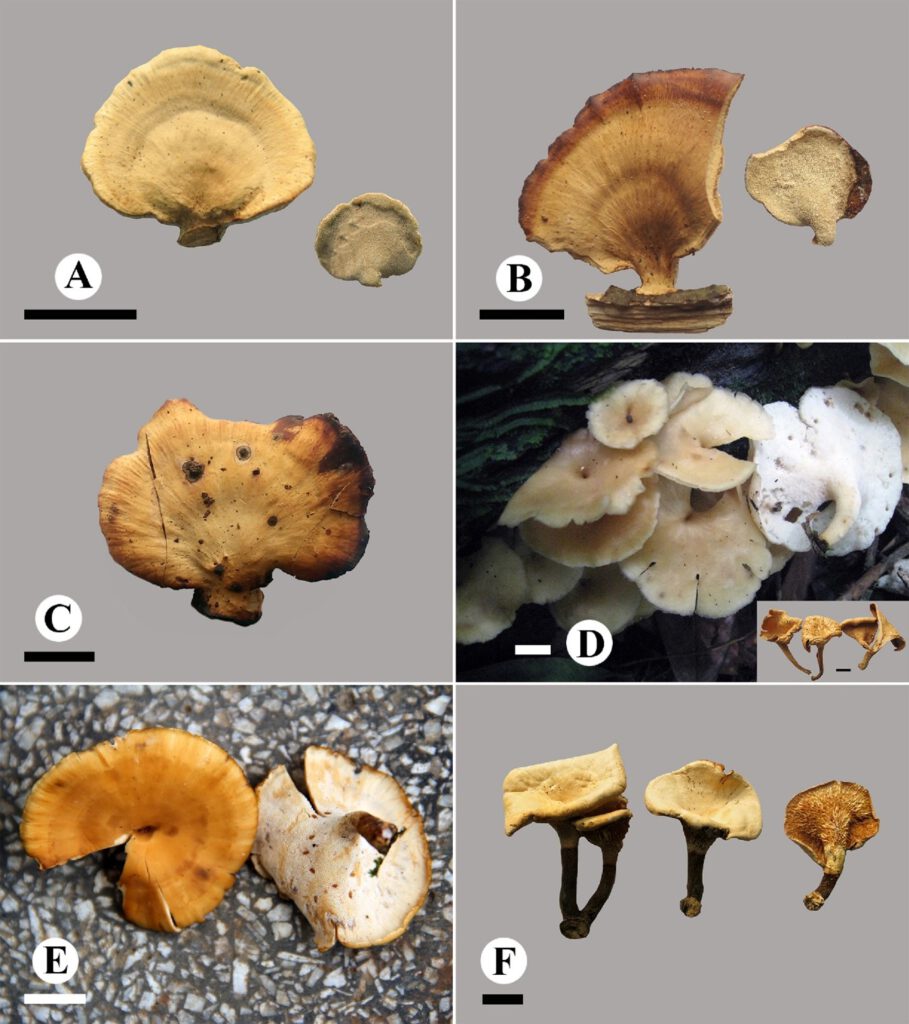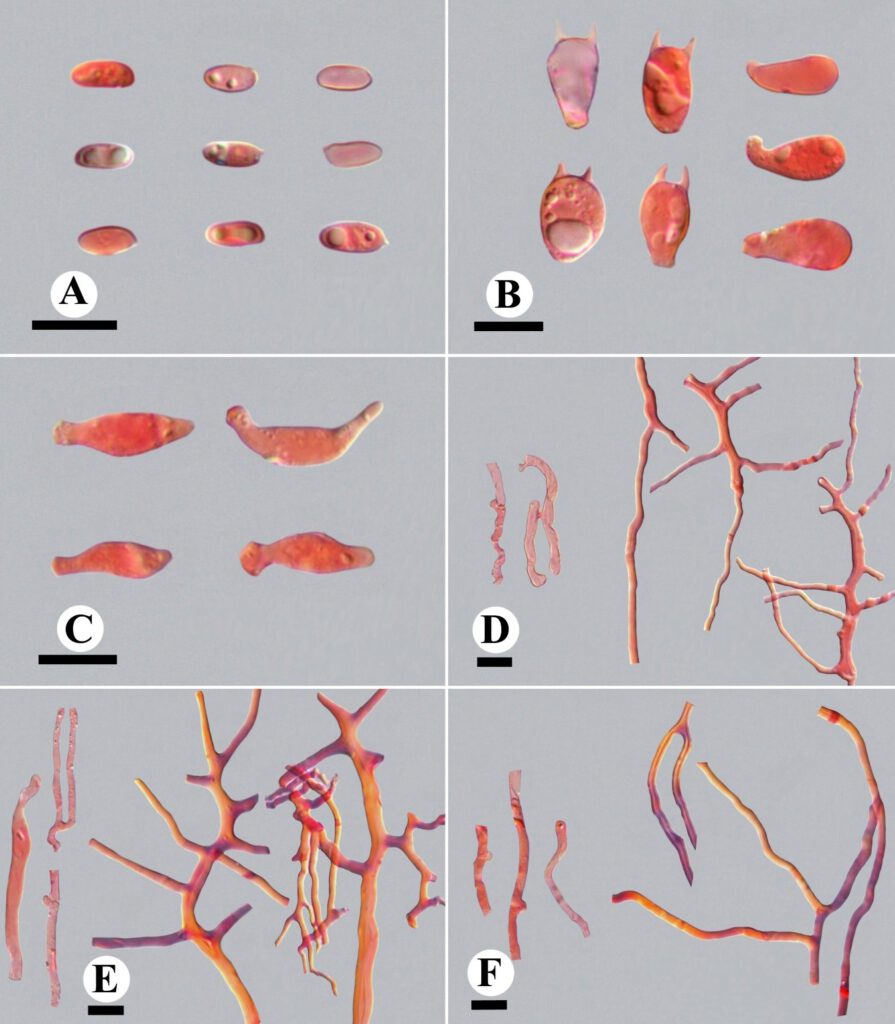Picipes brevistipitatus B.K. Cui, Xing Ji & J.L. Zhou, sp. nov.
MycoBank number: MB 559399; Index Fungorum number: IF 559399; Facesoffungi number: FoF 10647;
Description
Basidiomata – Annual, laterally stipitate, solitary, woody hard when dry. Pilei fan-shaped to irregularly semicircular, projecting up to 2 cm long, 3.1 cm wide and 4.5 mm thick at base. Pileal surface cream, buff to olivaceous buff when dry, glabrous, occasionally zonate and with radially aligned stripes; margin straight. Pore surface pale mouse-grey when dry; pores suborbicular, 3–6 per mm; dissepiments thin, entire. Context buff when dry, woody hard upon drying, up to 2.5 mm thick. Tubes concolorous with pore surface, decurrent on one side of the stipe, up to 2 mm thick. Stipe very short or forming a flattened base, concolorous with pileal surface, glabrous, up to 4 mm long and 8.5 mm in diam.
Hyphal structure – Hyphal system dimitic; generative hyphae bearing clamp connections; skeleto-binding hyphae IKI–, CB+; tissues unchanged in KOH.
Context – Generative hyphae infrequent, colorless, thin-walled, occasionally branched, 1.5–3.5 μm in diam; skeleto-binding hyphae dominant, colorless, thick-walled with a wide to narrow lumen or solid, with arboriform branches, strongly interwoven, 1.5–4 μm in diam.
Tubes – Generative hyphae frequent, colorless, thin-walled, occasionally branched, 1.5–5.5 μm in diam; skeleto-binding hyphae dominant, colorless, thick-walled with a wide to narrow lumen or solid, with arboriform branches, strongly interwoven, 1–6 μm in diam. Cystidia absent; cystidioles subulate, 15–25.5 × 4.5–5.8 μm. Basidia oblong to clavate, with a basal clamp connection and four sterigmata, 12.5–15.5 × 4.8–9.6 μm; basidioles clavate, slightly smaller than basidia.
Stipe – Generative hyphae frequent, colorless, thin-walled, rarely branched, 1.5–3.6 μm in diam; skeleto-binding hyphae dominant, colorless, thick-walled with a wide to narrow lumen or solid, moderately branched, interwoven, 1–4.5 μm in diam.
Basidiospores – Basidiospores cylindrical, rarely oblong, colorless, thin-walled, smooth, frequently bearing one or more guttules, IKI–, CB–, (5.7–)5.9–7.1(–7.7) × (2.6–)2.7–3.4(−3.8) μm, L = 6.54 ± 0.39 μm, W = 2.98 ± 0.22 μm, Q = 1.84–2.73, Qm = 2.2 ± 0.15 (n=85/3).
Material examined: CHINA, on fallen angiosperm branch, 18 November 2015, B.K. Cui, Cui 13652 (BJFC, holotype), Cui 13657 (BJFC, paratype); on fallen angiosperm branch, 27 October 2013, B.K. Cui, Cui 11345 (BJFC, paratype).
Distribution: Tropical and subtropical regions of China.
Sequence data: Cui 13652: ITS: KX900075.1 (ITS4/ITS5); LSU: KX900189.1 (LROR/LR7); nSSU: KX900281.1 (PNS1/NS41); mtSSU: KX900238.1 (MS1/MS2); EF1a: KX905086.1 (983/1567R) Cui 11345: ITS: KX900074.1 (ITS4/ITS5); LSU: KX900188.1 (LROR/LR7); nSSU: KX900280.1 (PNS1/NS41); mtSSU: KX900237.1 (MS1/MS2); EF1a: KX905085.1 (983/1567R)
Fig. 2–A Basidiomata of Picipes brevistipitatus (Cui 13652). Scale bars: 1 cm. Fig. 7 Microscopic structures of Picipes brevistipitatus. (A): Basidiospores; (B): Basidia and basidioles; (C): Cystidioles; (D): Hyphae from context; (E): Hyphae from trama; (F): Hyphae from stipe. Scale bars: A-F = 10 μm.

Fig. 2

Fig. 7
